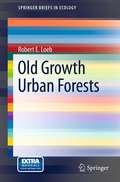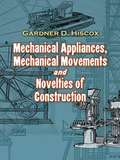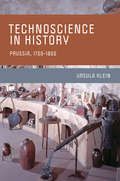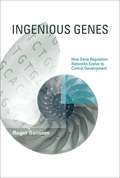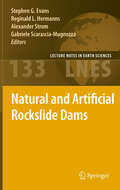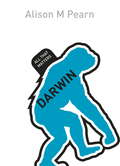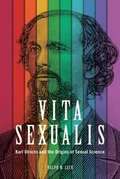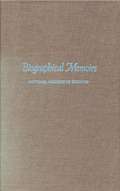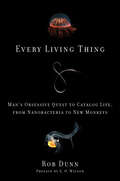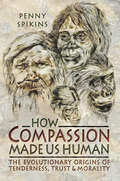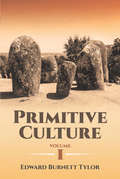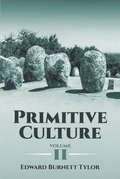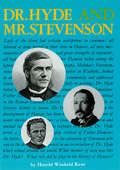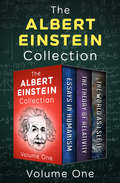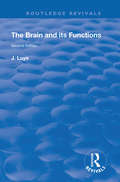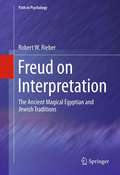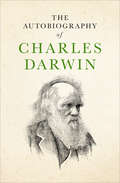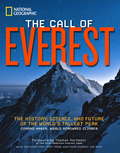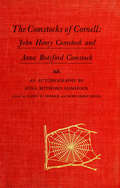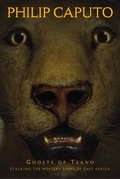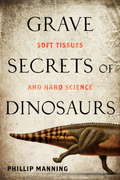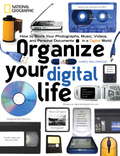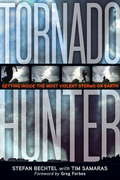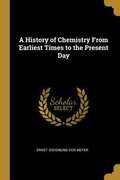- Table View
- List View
Old Growth Urban Forests
by Robert E. LoebMillions of urbanites never see primeval forests during their lives except for the old growth forests found in urban parks. Unfortunately, these forests are on the verge of disappearing because arboreal reproduction is lost to human trampling and park administrators and urban foresters do not maintain these "natural" forests. To aid urban foresters and park managers in meeting the challenges, research on old growth forests in urban parks is synthesized in terms of historical ecology to introduce the methods utilized to reveal long-term forest composition changes. The case study of three stands in Fairmount Park, Philadelphia, PA relates pre-chestnut blight tree species densities and post-chestnut blight arboreal changes to fire and visitor trampling. The information gained on how urban old growth forests have developed and changed is used to develop restoration ecology based frameworks to restore species composition and address challenges to forest survival including invasive species.
Mechanical Appliances, Mechanical Movements and Novelties of Construction
by Gardner D. HiscoxFrom the devices that power ships and trains to the workings of clocks, typewriters, and guns, this engrossing visual narrative profiles the specific and unique properties of hundreds of mechanical devices. Nearly 1,000 detailed illustrations depict steam-powered appliances, spring-powered devices, hydraulic equipment, and other machines, many of which remain in common use today. Each apparatus features a detailed line drawing and an informative explanation of its workings and uses. A final chapter chronicles 400 years of impassioned but futile searching for a perpetual motion machine.The companion to Dover's 1800 Mechanical Movements, Devices and Appliances, this volume features fewer but more complex machines than its predecessor. Today's readers--especially engineers, inventors, and other mechanically inclined individuals--will find endless fascination and inspiration among the novelty and variety of these ingenious mechanical designs.
Technoscience in History: Prussia, 1750-1850 (Transformations: Studies in the History of Science and Technology)
by Ursula KleinThe second edition of a comprehensive introduction to machine learning approaches used in predictive data analytics, covering both theory and practice.Machine learning is often used to build predictive models by extracting patterns from large datasets. These models are used in predictive data analytics applications including price prediction, risk assessment, predicting customer behavior, and document classification. This introductory textbook offers a detailed and focused treatment of the most important machine learning approaches used in predictive data analytics, covering both theoretical concepts and practical applications. Technical and mathematical material is augmented with explanatory worked examples, and case studies illustrate the application of these models in the broader business context.
Ingenious Genes
by Roger SansomEach of us is a collection of more than ten trillion cells, busy performing tasks crucial to our continued existence. Gene regulation networks, consisting of a subset of genes called transcription factors, control cellular activity, producing the right gene activities for the many situations that the multiplicity of cells in our bodies face. Genes working together make up a truly ingenious system. In this book, Roger Sansom investigates how gene regulation works and how such a refined but simple system evolved. Sansom describes in detail two frameworks for understanding gene regulation. The first, developed by the theoretical biologist Stuart Kauffman, holds that gene regulation networks are fundamentally systems that repeat patterns of gene expression. Sansom finds Kauffman's framework an inadequate explanation for how cells overcome the difficulty of development. Sansom proposes an alternative: the connectionist framework. Drawing on work from artificial intelligence and philosophy of mind, he argues that the key lies in how multiple transcription factors combine to regulate a single gene, acting in a way that is qualitatively consistent. This allows the expression of genes to be finely tuned to the variable microenvironments of cells. Because of the nature of both development and its evolution, we can gain insight into the developmental process when we identify gene regulation networks as the controllers of development. The ingenuity of genes is explained by how gene regulation networks evolve to control development.
Natural and Artificial Rockslide Dams
by Reginald L. Hermanns Alexander Strom Stephen G. Evans Gabriele Scarascia-MugnozzaIn the last one hundred years, a number of catastrophic events associated with rockslide dam formation and failure have occurred in the mountain regions of the world. This book presents a global view of the formation, characteristics and behaviour of natural and artificial rockslide dams. Chapters include a comprehensive state-of-the-art review of our global understanding natural and artificial rockslide dams, overviews of approaches to rockslide dam risk mitigation, regional studies of rockslide dams in India, Nepal, China, Pakistan, New Zealand, and Argentina. Rockslide dams associated with large-scale instability of volcanoes are also examined. Detailed case histories of well-known historic and prehistoric rockslide dams provide examples of investigations of rockslide dam behaviour, stability, and characteristics. The formation and behaviour of rockslide-dammed lakes ("Quake Lakes") formed during the 2008 Wenchuan Earthquake, China are also comprehensively summarised. The formation, sedimentology and stability of rockslide dams is examined in several analytical papers. An analysis of break-out floods from volcanogenic lakes and hydrological methods of estimating break-out flood magnitude and behavior are reviewed. The use of remote sensing data in rockslide-dammed lake characterisation is explored and a new approach to the classification of rockslide dams is introduced. Finally, a unique section of the book summarises Russian and Kyrgyz experience with blast-fill dam construction in two papers by leading authorities on the technology. The volume contains 24 papers by 50 authors from 16 countries including most of the recognised world authorities on the subject.
Darwin: All That Matters (All That Matters)
by Alison PearnCharles Darwin's name is among the most recognised in the world, and more than 100 years after his death his books are still best-sellers; there are more than ten modern editions of the most famous, On the Origin of Species, currently available. His theories of descent with modification and of sexual selection are among the most influential ever formulated, but those theories, which imply the interconnectedness not just of humans and animals but of every living thing, are often imperfectly understood, or even willfully misrepresented, and Darwin himself is reduced to a two-dimensional character, a cipher deployed in the guerilla warfare between fundamentalist religion and hard line atheism. How many people know that Darwin was famous among his family and friends for his sense of fun? Darwin: All That Matters puts his life, personality, and the full breadth and significance of his work in context, with greater emphasis on his post-Origin work. It is perfect for those who want to gain a sound grasp of the subject quickly, and those looking for a good entry-level book as a starting point for further study.
Vita Sexualis: Karl Ulrichs and the Origins of Sexual Science
by Ralph M. LeckKarl Ulrichs's studies of sexual diversity galvanized the burgeoning field of sexual science in the nineteenth century. But in the years since, his groundbreaking activism has overshadowed his scholarly achievements. Ulrichs publicly defied Prussian law to agitate for gay equality and marriage, and founded the world's first organization dedicated to the legal and social emancipation of homosexuals. Ralph M. Leck returns Ulrichs to his place as the inventor of the science of sexual heterogeneity. Leck's analysis situates sexual science in a context that includes politics, aesthetics, the languages of science, and the ethics of gender. Although he was the greatest nineteenth-century scholar of sexual heterogeneity, Ulrichs retained certain traditional conjectures about gender. Leck recognizes these subtleties and employs the analytical concepts of modernist vita sexualis and traditional psychopathia sexualis to articulate philosophical and cultural differences among sexologists. Original and audacious, Vita Sexualis uses a bedrock figure's scientific and political innovations to open new insights into the history of sexual science, legal systems, and Western amatory codes.
Biographical Memoirs: Volume 74
by National Academy of Sciences StaffMemoirs of histories more distinguished figures
Every Living Thing: Man's Obsessive Quest to Catalog Life, from Nanobacteria to New Monkeys
by Rob DunnBiologists and laypeople alike have repeatedly claimed victory over life. A thousand years ago we thought we knew almost everything; a hundred years ago, too. But even today, Rob Dunn argues, discoveries we can't yet imagine still await.In a series of vivid portraits of single-minded scientists, Dunn traces the history of human discovery, from the establishment of classification in the eighteenth century to today's attempts to find life in space. The narrative telescopes from a scientist's attempt to find one single thing (a rare ant-emulating beetle species) to another scientist's attempt to find everything in a small patch of jungle in Guanacaste, Costa Rica. With poetry and humor, Dunn reminds readers how tough and exhilarating it is to study the natural world, and why it matters.
How Compassion Made Us Human: The Evolutionary Origins of Tenderness, Trust & Morality
by Penelope SpikinsAn intriguing look at how our capacity to care about and connect with others has contributed to our evolutionary success as a species. Our ability to care about the wellbeing of others, whether they are close family or strangers, can appear to be unimportant in today&’s competitive societies. But in this volume, archaeologist Penny Spikins argues that compassion lies at the heart of what makes us human. She takes us on a journey from the earliest Stone Age societies two million years ago to the lives of Neanderthals in Ice Age Europe, using archaeological evidence to illustrate the central role that emotional connections had in human evolution. Simple acts of kindness left to us from millions of years ago provide evidence for how social emotions and morality evolved, and how our capacity to reach out beyond ourselves into the lives of others allowed us to work together for a common good—and form the basis for human success.
Primitive Culture Volume I
by Edward Burnett TylorUse of the term "culture" as an expression of the full range of learned human behavior patterns began with this classic two-volume work, first published in 1871. Edward B. Tylor, the first Professor of Anthropology at the University of Oxford, declared that culture is "that complex whole which includes knowledge, belief, art, law, morals, custom, and any other capabilities and habits acquired by man as a member of society." Tylor is credited with the establishment of anthropology as a scientific discipline, and his groundbreaking work was highly influential in the development of cultural evolution as the foundation for anthropologic studies. Tylor's unilinear model of development maintains that humans share a common history, evolving from a single primitive form. His studies of the languages, rituals, and beliefs of societies from around the world pioneered the use of statistical data and substantiated his view of a universal pattern of development in all cultures. Volume I of Primitive Culture focuses on social evolution, language, and myth. Volume II focuses on Tylor's interpretation of animism in society, offering details of the endlessly varied ideas and beliefs regarding the soul, spirits, and gods.
Primitive Culture, Volume II: Researches Into The Development Of Mythology, Philosophy, Religion, Art, And Custom, Volume 2 - Primary Source Edition (Cambridge Library Collection - Anthropology)
by Edward Burnett TylorThe first Professor of Anthropology at the University of Oxford, Edward B. Tylor, defined the term "culture" for modern readers in this groundbreaking work. Initially published in 1871, this classic two-volume study explores the full range of learned human behavior patterns in terms of the beliefs, wisdom, laws, artistic achievements, and mores that constitute a society. The formation of anthropology as a scientific discipline began with this work, which continues to exercise a profound influence on anthropologic studies. The shared history of all humans, a common ground that evolved from primitive roots, constitutes the basis for Tylor's model of development. Drawing upon a worldwide variety of beliefs, rituals, and languages, the author illustrates an all-inclusive pattern of progress. His methods inaugurated the use of statistical data in anthropology, a standard procedure today but a landmark for his time. Volume I of Primitive Culture examines social evolution, language, and myth. The focus of this second volume is animism in society, which explores the tremendous diversity of thinking related to the concepts of the soul and religion as well as the marked similarities of spiritual beliefs.
Dr. Hyde and Mr. Stevenson
by Harold Winfield KentDr. Hyde and Mr. Stevenson: the life of the Rev. Dr. Charles McEwen Hyde, including a discussion of the open letter of Robert Louis Stevenson.
The Albert Einstein Collection Volume One: Essays in Humanism, The Theory of Relativity, and The World As I See It
by Albert EinsteinThree captivating volumes reveal how Einstein viewed both the physical universe and the everyday world in which he lived. A century after his theory of general relativity shook the foundations of the scientific world, Albert Einstein&’s name is still synonymous with genius. This collection is an introduction to one of the world&’s greatest minds.Essays in Humanism Nuclear proliferation, Zionism, and the global economy are just a few of the insightful and surprisingly prescient topics scientist Albert Einstein discusses in this volume of collected essays from between 1931 and 1950. With a clear voice and a thoughtful perspective on the effects of science, economics, and politics in daily life, Einstein&’s essays provide an intriguing view inside the mind of a genius as he addresses the philosophical challenges presented during the turbulence of the Great Depression, World War II, and the dawn of the Cold War.The Theory of Relativity and Other Essays E=mc2 may be Einstein&’s most well-known contribution to modern science. Now, on the one-hundredth anniversary of the theory of general relativity, discover the thought process behind this famous equation. In this collection of his seven most important essays on physics, Einstein guides his reader through the many layers of scientific theory that formed a starting point for his discoveries. By both supporting and refuting the theories and scientific efforts of his predecessors, he reveals the origins and meaning of such significant topics as physics and reality, the fundamentals of theoretical physics, the common language of science, the laws of science and of ethics, and an elementary derivation of the equivalence of mass and energy. This remarkable collection, authorized by the Albert Einstein archives, allows the non-scientist to understand not only the significance of Einstein&’s masterpiece, but also the brilliant mind behind it.The World As I See It Authorized by the Albert Einstein Archives, this is a fascinating collection of observations about life, religion, nationalism, and a host of personal topics that engaged the intellect of one of the world&’s greatest minds. In the aftermath of World War I, Einstein writes about his hopes for the League of Nations, his feelings as a German citizen about the growing anti-Semitism and nationalism of his country, and his opinions about the current affairs of his day. In addition to these political perspectives, The World As I See It reveals the idealistic, spiritual, and witty side of this great intellectual as he approaches topics including &“Good and Evil,&” &“Religion and Science,&” &“Active Pacifism,&” &“Christianity and Judaism,&” and &“Minorities.&” Including letters, speeches, articles and essays written before 1935, this collection offers a complete portrait of Einstein as a humanitarian and as a human being trying to make sense of the changing world around him.This authorized ebook features new introductions by Neil Berger and an illustrated biography of Albert Einstein, which includes rare photos and never-before-seen documents from the Albert Einstein Archives at the Hebrew University of Jerusalem.
The Brain and its Functions (Routledge Revivals)
by J LuysFirst published in 1881. The present work, on the structure and functions of the brain, is an abstract of the author's persoal experience as regards this subject. It is divided into two distinct parts; the first, anatomical, serves as the foundation of the work. It is followed by a second, purely physiological, which is its complement and necessary sequence. It includes chapters on the optic thalamus, the corpus striatum, and the memory in exercise.
Freud on Interpretation
by Robert W RieberThis book presents new insights into Freud's famous "discovery" of the unconscious and the subsequent development of psychoanalytic theories. The authors explore the original context in which these ideas arose and the central debate about mind as matter or something that transcends matter. In the course of this examination, it is demonstrated that Freud was influenced not only by the 19th century scientific milieu, but also by ancient cultures. While it is known that Freud was an avid collector of ancient artifacts and generally interested in these older cultures, this book systematically investigates their profound effect on his thinking and theorizing. Two major influences, Egyptian mythology and Jewish mysticism are analyzed in terms of similarities to Freud's emerging ideas about the mind and its diseases. To further this line of investigation, Bakan supplies an illuminating discussion of what it means to interpret. Taken from the viewpoint that interpretation involves an u
The Autobiography of Charles Darwin: Super Large Print Edition Of The Classic Memoir For Low Vision Readers (Barnes And Noble Library Of Essential Reading Series)
by Charles DarwinA small collection of letters written by that most famous of English naturalists, Charles Darwin. The letters cover subjects such as his marriage, his time at Cambridge, his 'Voyage of the Beagle', and his return to England.
The Call of Everest: The History, Science, and Future of the World's Tallest Peak
by Thomas Hornbein Conrad AnkerIn 1963, the American Mount Everest Expedition made mountaineering history. It was the first American venture to successfully scale the legendary peak and the first successful climb up the hazardous West Ridge (a climb so difficult no one has yet repeated it). In 2012, adventurer Conrad Anker led a National Geographic/The North Face team up the mountain to enact a legacy climb. Environmental changes and overcrowding led to challenges and disappointments, but yet the mountain maintains its allure. Now, steely-eyed Anker leads a team of writers in a book designed to celebrate the world's most famous mountain, to look back over the years of climbing triumphs and tragedies, and to spotlight what has changed - and what remains eternal - on Mount Everest. Telltale signs of Everest's current state, never-before-published photography, and cutting-edge science expose the world's tallest peak - its ancient meaning, its ever-present challenges, and its future in a world of disappearing ice.
The Comstocks of Cornell: John Henry Comstock and Anna Botsford Comstock
by Anna Botsford ComstockThe Comstocks of Cornell is the autobiography written by naturalist educator Anna Botsford Comstock about her life and her husband's, entomologist John Henry Comstock—both prominent figures in the scientific community and in Cornell University history.A first edition was published in 1953, but it omitted key Cornellians, historical anecdotes, and personal insights. Karen Penders St. Clair's twenty-first century edition returns Mrs. Comstock's voice to her book by rekeying her entire manuscript as she wrote it, and preserving the memories of the personal and professional lives of the Comstocks that she had originally intended to share. The book includes a complete epilogue of the Comstocks' last years and fills in gaps from the 1953 edition. Described as serious legacy work, the book is an essential part of Cornell University history and an important piece of Cornell University Press history.
Ghosts of Tsavo: Stalking the Mystery Lions of East Africa
by Phillip Caputo1898, Tsavo River Kenya, the British Empire has employed 140 workers to build a railroad bridge. The bridge's construction comes to a violent halt when two maneless lions devour all 140 workers in a savage feeding frenzy that would make headlines and history - all over the world. Caputo's Ghosts of Tsavo is a new quest for truth about the origins of these near-mythical animals and how they became predators of human flesh.
Grave Secrets of Dinosaurs: Soft Tissues and Hard Science
by Phil ManningMany of us have seen dinosaur bones and skeletons, maybe even dinosaur eggs, but what did those fearsome animals really look like in the flesh? Soft-tissue fossils give tantalizing clues about the appearance and physiology of the ancient animals. Bone structure is just the beginning of our knowledge today, thanks to amazing digs like these. Drawing on new breakthroughs and cutting-edge techniques of analysis, Dr. Manning takes us on a thrilling, globe-spanning tour of dinosaur mummy finds from the first such excavation in 1908 to a baby dinosaur unearthed in 1980, from a dino with a heart in South Dakota to titanosaur embryos in Argentina. And he discusses his own groundbreaking analysis of Dakota, discovered by Tyler Lyson. Using state-of-the-art technology to scan and analyse this remarkable discovery, National Geographic and Dr. Manning create an incredibly lifelike portrait of Dakota. The knowledge to be gained from this exceedingly rare find, and those that came before it, will intrigue dinosaur-loving readers of all ages.
Organize Your Digital Life: How to Store Your Photographs, Music, Videos, and Personal Documents in a Digital World
by Aimee BaldridgeThis book delivers basic step-by-step instruction on streamlining and organizing your digital life, so you can find what you need instantly and create presentations your friends and family will love.
Tornado Hunter: Getting Inside the Most Violent Storms on Earth
by Tim SamarasOf all nature's weapons, tornadoes are among the most unforgiving, and here is an unforgettable portrait of these storms and one extraordinary man who challenged them, and produced the first-ever photographs snatched from a rampaging twister's black heart.
A History of Chemistry From Earliest Times to the Present Day
by Ernst Sigismund Von MeyerThis work has been selected by scholars as being culturally important, and is part of the knowledge base of civilization as we know it. This work was reproduced from the original artifact, and remains as true to the original work as possible. Therefore, you will see the original copyright references, library stamps (as most of these works have been housed in our most important libraries around the world), and other notations in the work. <P><P>This work is in the public domain in the United States of America, and possibly other nations. Within the United States, you may freely copy and distribute this work, as no entity (individual or corporate) has a copyright on the body of the work. <P><P>As a reproduction of a historical artifact, this work may contain missing or blurred pages, poor pictures, errant marks, etc. Scholars believe, and we concur, that this work is important enough to be preserved, reproduced, and made generally available to the public. We appreciate your support of the preservation process, and thank you for being an important part of keeping this knowledge alive and relevant.
Nikola Tesla for Kids: His Life, Ideas, and Inventions, with 21 Activities (For Kids series)
by Amy M. O'QuinnNikola Tesla was a physicist, scientist, electrical engineer, and world-renowned inventor whose accomplishments faded into oblivion after his death in 1943. Tesla was undeniably eccentric and compulsive; some considered him to be somewhat of a "mad" scientist. But in reality, he was a visionary. Many of his ideas and inventions that were deemed impossible during his lifetime have since become reality. He was the first to successfully use rotating magnetic fields to create an AC (alternating current) electrical power supply system and induction motor. He is now acknowledged to have invented the radio ahead of Marconi. Among other things, he developed the Tesla coil, an oscillator, generators, fluorescent tubes, neon lights, and a small remote-controlled boat. He helped design the world's first hydroelectric plant at Niagara Falls. Nikola Tesla for Kids is the story of Nikola Tesla's life and ideas, complete with a time line, 21 hands-on activities, and additional resources to better understand his many accomplishments.
